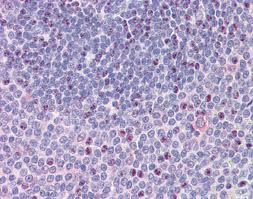非酒精性脂肪性肝疾病(nonalcoholic fatty liver disease,NAFLD)是一种无过量饮酒史,以肝细胞脂肪变性和脂质蓄积为主要特征的临床病理综合症,通常伴随高血脂、高血糖和胰岛素抵抗等代谢综合征。过量的甘油三酯在肝脏细胞中长期堆积会导致肝脏细胞坏死,功能丧失,进而发生肝纤维化,肝硬化和肝癌。近年来NAFLD发病率在我国及世界范围内不断上升,使得对于该疾病的研究越来越受到重视,但其发病机理尚不清楚。

核受体辅激活蛋白-3
近期,Journal of Hepatology杂志在线发表了中科院上海生命科学研究院健康所内分泌代谢疾病研究组/瑞金医院内分泌科宁光教授研究组对于NAFLD发病机制的研究成果Deletion of Steroid receptor coactivator-3 gene ameliorates hepatic steatosis。本项研究发现了核受体辅激活蛋白-3 (SRC-3)参与调控非酒精性脂肪肝的致病机制。
在宁光教授指导下,健康所博士生马欣然和徐凌燕等研究人员发现,SRC-3基因缺失在HepG2肝脏细胞系中可以抑制棕榈酸诱导的脂滴累积,SRC-3敲除小鼠可以抵抗高脂饮食诱导的脂肪肝和炎症反应。研究表明,这可能是由于SRC-3缺失降低了鸡卵清蛋白上游启动子转录因子(COUP-TFII),从而升高了过氧化物酶体增殖物激活受体(PPARa)的表达水平,加快肝细胞中的β氧化而改善肝脏的脂质代谢。通过系列分子实验证实,在全反式维甲酸ATRA存在下,SRC-3能够辅助维甲酸受体RARa结合于COUP-TFII启动子上游促进其转录。通过对脂肪肝病人组织芯片染色,也证实了SRC-3核表达与脂肪肝呈正相关。
该研究首次发现SRC-3在肝脏脂质代谢中的重要生理功能和调控机制,揭示了SRC-3在NAFLD发病进程中的重要作用,提供了新的治疗靶点,对治疗NAFLD具有现实的指导意义。
该项研究工作得到了国家科技部973计划、863计划、国家自然科学基金委、上海市科委项目的资助。(生物探索)
相关英文论文摘要:
Deletion of steroid receptor coactivator-3 gene ameliorates hepatic steatosis.
Background & aims Excess dietary fat can cause hepatic steatosis, which can progress into severe liver disorders including steatohepatitis and cirrhosis. Steroid receptor coactivator-3 (SRC-3), a member of the p160 coactivator family, is reported as a key regulator of adipogenesis and energy homeostasis. We sought to determine the influence of SRC-3 on hepatic steatosis and the mechanism beneath.
Methods The influence of siRNA-mediated SRC-3 silencing on hepatic lipid accumulation was assessed in HepG2 cells. The molecular mechanism of SRC-3 regulation of hepatic lipid metabolism was also studied. Moreover, the effect of SRC-3 ablation on hepatic steatosis was examined in SRC-3 deficient mice.
Results In this study, we report that SRC-3 ablation reduces palmitic acid-induced lipid accumulation in HepG2 cells. Moreover, deletion of SRC-3 ameliorates hepatic steatosis and inflammation response in mice fed a high fat diet (HFD). These metabolic improvements can presumably be explained by the reduction in chicken ovalbumin upstream promoter transcription factor II (COUP-TFII) expression and the subsequent elevation in peroxisome proliferator-activated receptor α (PPARα) level. At the molecular level, SRC-3 interacts with retinoic receptor α (RARα) to activate COUP-TFII expression under all-trans retinoic acid (ARTA) treatment.
Conclusions These findings indicate a crucial role for SRC-3 in regulating hepatic lipid metabolism and provide the possible novel inner mechanisms.
英文论文链接:https://www.jhep-elsevier.com/article/S0168-8278(10)01165-7/abstract







